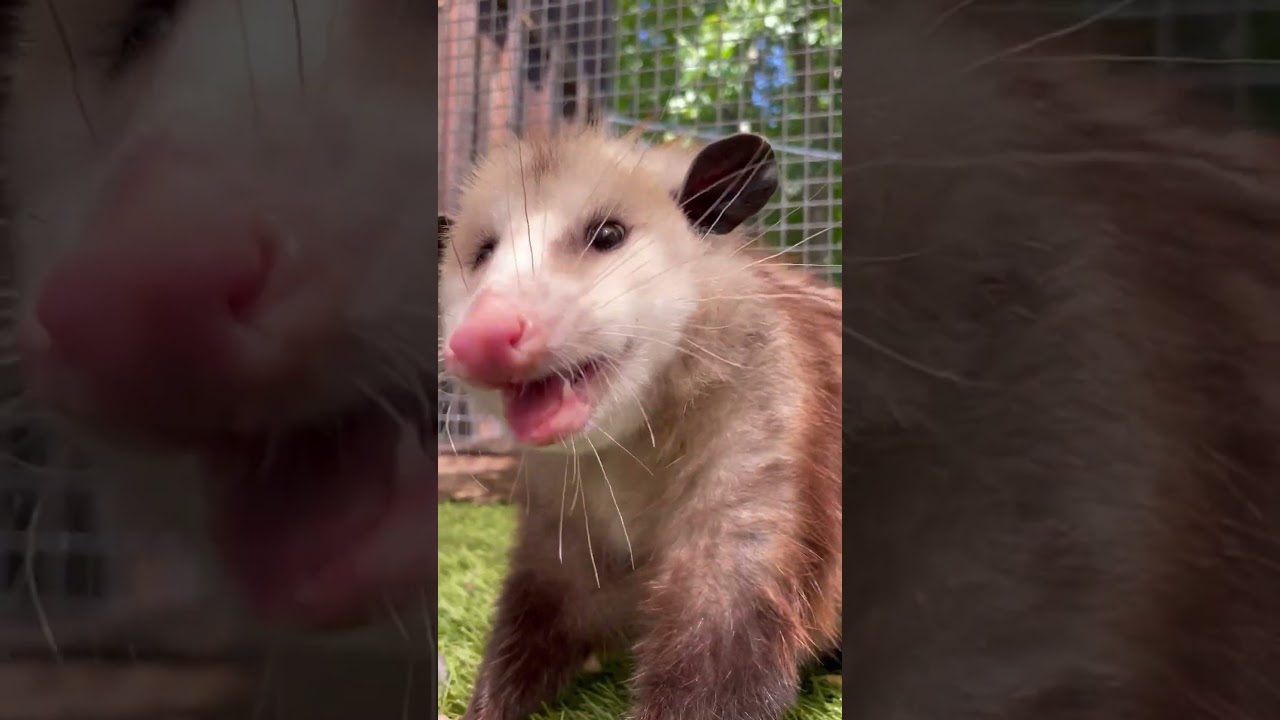- Insights into the dietary habits and preferences of opossums
- Emphasis on Salmon the Opossum’s role in educational outreach
- The significance of providing species-specific nutrition in zoos
- Contributions of wildlife conservation and rehabilitation on species survival
- Implications of human-wildlife interaction facilitated by zoological institutions
Salmon the opossum has debuted in a captivating video, showcasing her snacking on some of her favorite fruits. This particular content is not just an adorable moment but also provides significant insights into various aspects of zoological management, dietary preferences of opossums, and overarching conservation efforts. The educational implications of observing the dietary habits of a North American marsupial like Salmon can offer valuable lessons to both wildlife enthusiasts and professionals working in the field of zoo management and conservation.
Opossums are versatile eaters, with diets ranging from fruits, insects, small animals, and even plant material. Their generalist feeding behavior allows them to adapt to various environments, making them resilient, yet misunderstood, creatures. The video with Salmon the Opossum showcases the anatomy of their eating habits. When we see Salmon nibbling on fruits like berries, apples, and bananas, we get a closer look at the dietary requirements necessary for her overall health and well-being.
Zoo management teams play a crucial role in ensuring that animals like Salmon the Opossum receive a balanced diet that mimics their natural food sources. This keeps the animals in excellent condition and promotes natural behaviors, contributing to their physical and psychological health. In captivity, an opossum’s diet is meticulously curated by a team of experts, including veterinarians and nutritionists, who strive to replicate their natural feeding patterns as closely as possible. This requires understanding their metabolic needs, seasonal variations in diets, and the nutritional content of different foods.
Salmon’s role extends beyond just being a dietary exemplar; she is also an important figure in educational outreach. Many zoological institutions have embraced the task of increasing public awareness about wildlife, their habits, and conservation needs. By observing Salmon snacking on her favorite fruits, the public can learn about the importance of dietary diversity and the impact of nutrition on animal health. Education programs often use such engaging visuals to discuss broader ecological themes, such as the role of opossums in pest control and seed dispersion.
In the context of zoo management, providing species-specific nutrition is critical. For a species like opossums, which are omnivorous and have varied diets in the wild, this involves offering a range of food items that fulfill their nutritional requirements. Proper nutrition supports reproductive success, immune function, and overall vitality. It also helps in mimicking natural foraging behavior, thus enriching the captive environment. By providing a range of fruits such as those consumed by Salmon, zoo managers contribute significantly to the animal’s health and natural instincts.
Wildlife conservation efforts contribute substantially to the survival of species, including opossums. Organizations involved in wildlife rehabilitation often work with injured, orphaned, or displaced opossums, providing the care and nutrition they need before reintroducing them to the wild. This process is deeply connected to zoo management practices. Lessons learned in caring for animals in captivity often translate into rehabilitation protocols that increase success rates in the wild. By ensuring a diet that promotes health and recovery, these efforts directly impact the conservation status and resilience of opossum populations.
Human-wildlife interaction, as seen in zoo environments, offers a unique opportunity for education and conservation messaging. The presence of animals like Salmon the Opossum in zoos allows for a direct connection between the public and wildlife, fostering a greater appreciation for nature. Zoos serve as living classrooms where visitors can learn about the natural history of animals and the challenges they face in the wild. By making interactions engaging and informative, zoos can inspire actions towards conservation initiatives, such as habitat preservation and support for wildlife protection laws.
Salmon the opossum’s video serves as more than just entertainment; it is a vivid portrayal of the complex interplay between diet, health, and educational outreach in zoo management and conservation efforts. By highlighting her snacking habits, the video underscores the dedication to species-specific care, the role of zoos in public education, and the broader implications for wildlife conservation. Through careful management and a focus on natural behaviors, zoological institutions can create environments where animals thrive and continue to captivate and educate the public about the wonders of the natural world.
*****
Source Description
Salmon the opossum is snacking on some of her favorite fruits! While she loves a juicy treat, opossums like Salmon enjoy a varied diet as opportunistic omnivores. 🐾 Want to see more of her? 🗣️ Catch our opossum keeper chat every Tuesday at 2 PM to learn more!


